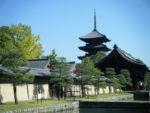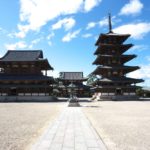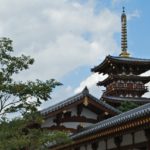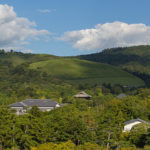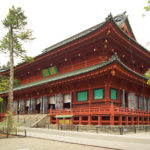Feature of Japanese traditional architectures

The number of the temples in Japan is about 76,000 and that of the shrines is about 80,000. Coming to Japan, you can see the temples and the shrines everywhere even if you travel Kyoto, Nara, or Kamakura.
Today, few Japanese deeply devot to a specific religion. But Buddhism and Shinto has take rooted in their lifestyle. So they visit the temples and shrines in various events, including new year, wedding and funeral. Of course for sightseeing. And people pray for their good health, bumper crops, or descendants in prosperity.
Japanese traditional architectures, especially the temples, are seen as one of the streams of Chinese. But they are different from Chinese, often contain plain wood. Most of their timber are Japanese cypress.
Shrine/Shinto
In Shinto, there are about eight million Gods, “Yaoyorozu-no-Kami(八百万の神)”, including an animism such as mountains, forests, rivers, and ancestors. A shrine occasionally worships several Gods. One of the oldest shrines has been said the date back to the 4th or the 5th century.
But the most of the shrine deify the Gods who appear on “Kojiki”(古事記) , such as Aamaterasu Oomikami(天照大御神), Ookuninushi-no Mikoto(大国主命), and Susanoo-no Mikoto(素戔嗚尊).
Lern More About “Shinto shrine in Japan”
Temple/Buddhism
In the Japanese language, temple means “tera/dera” or “ji”. When you write both of them in Kanji, it is ”寺”. In 6th century of Asuka Period, Korean people introdeuced Buddhism with the Buddha statue and the sutras.
Since then, authorities and Buddhist monks of each era founded the temples. Horyuji Temple in Nara prefecture is the oldest wooden structure still stands in the world. The temple have existed since later half of the 7th century. And Todaiji Temple is larger than any other wooden structure in the world.
Of course you would enjoy the structures of the temple but don’t miss the beatiful garden.
Learn more about temples in Japan
But Japanese religion takes really vague forms. The shrine and the temple sometime stand in the same area such as Nikko or Kii Mount Range. Japanese visit both of them at annual event.

